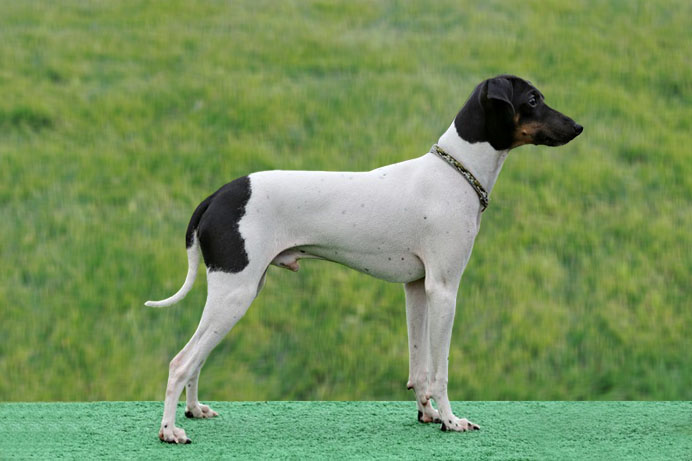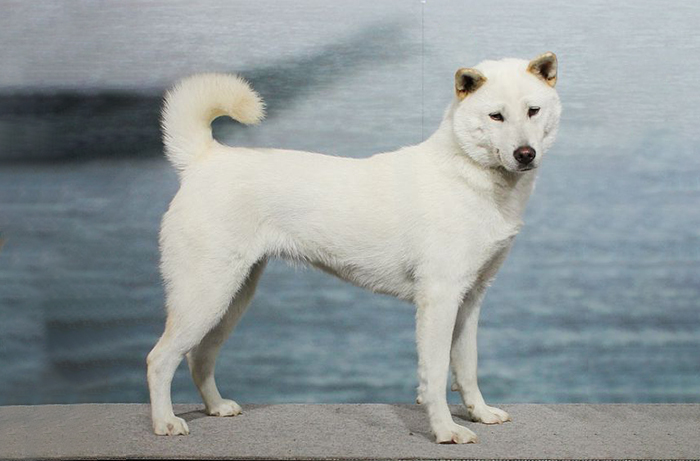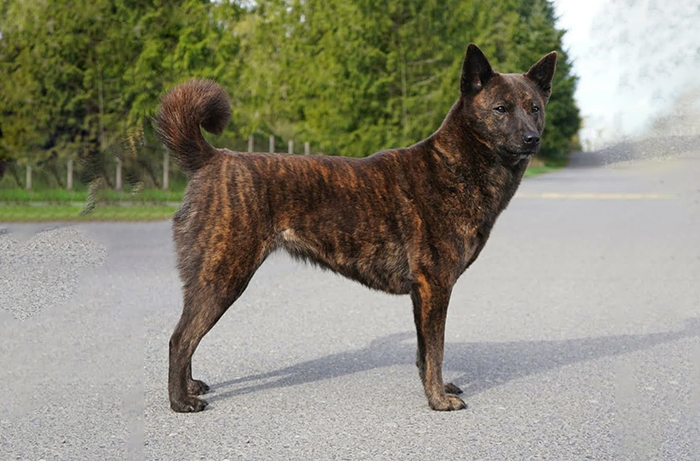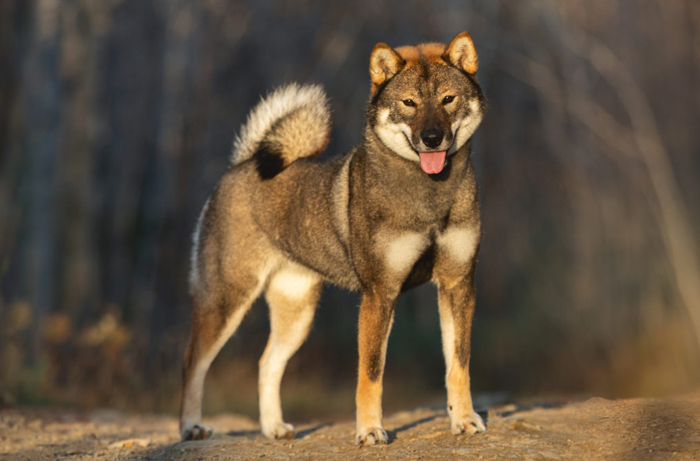Menu
BORZOI
graceful, strong and swiftJust fill out your Name and the Email.
The message has already been written.
Note: We will send you a confirmation email right after you submit it. If you haven’t seen the confirmation email within 5 minutes even in spam. That means your typed email address has a typo. Please re-confirm your email and re-send it to us. Thank you!
Some FAQs about Borzoi
Borzoi are intelligent and very affectionate with their owners, but are also independent and sometimes stubborn, so training may be a challenge. Patience and consistency are key. Overall they are usually gentle, well-mannered companions.
The Borzoi or Russian Hunting Sighthound is a Russian breed of hunting dog of sighthound type. It was formerly used for wolf hunting, and until 1936 was known as the Russian Wolfhound.
Borzois were bred for hunting by sight. Their unique face shape helps them to see around them up to 280 degrees, as compared to the 250-degree field of vision of an average dog. Their longer snouts accommodate large, strong jaws made to clamp down on large prey.
Originally, Borzoi were used to hunt running game, such as wolves, foxes, and hare, over relatively open ground. They had to depend on their speed, agility, and endurance to successfully catch their prey. The breed originated in Russia and has a noble heritage, as it was associated with the Russian aristocracy.
Borzói is the masculine singular form of an archaic Russian adjective that means ‘fast‘.
The Borzoi is normally good with kids, but its playfulness may not meet the expectations of some. Shy with strangers, some Borzoi are also quite timid. The Borzoi is a true example of a quiet and good-natured indoor house dog.
The Borzoi makes a wonderful pet for first-time dog owners because the dogs are relatively easy to care for. Regular grooming, including brushing teeth and hair, is important for keeping your Borzoi healthy and happy. Early socialization is also key to helping your Borzoi puppy grow into a well-adjusted adult dog.
With an average lifespan of 10 to 12 years, the Borzoi dog breed is prone to major health concerns such as gastric torsion, and minor problems like cardiomyopathy and hypothyroidism.
Borzois do not bark a lot. They are relatively quiet, timid animals that love their owners. If your Borzoi does bark a lot, they are probably trying to warning you about something like a watchdog. That’s about all they will do, and they are not very good at actually protecting you.
How to buy Borzoi in Japan?
STEP 1: Contact Us via:
To get the fastest response, we recommend you message us via Whatsapp.
STEP 2: Tell us you want a Borzoi and we are happy to hear more about other details like: gender, coat color, your expense, and your special request if you have one.
To save time, let fill out the form below with something like: Hello! or I need a dog. and that is enough to start our good cooperation.
*Please Note: It is difficult to know which breeder is trustworthy when you are in another country. But fortunately there are reputable associations that can guarantee the quality of breeders who are members of their association. These can be mentioned as Japan Kennel Club – JKC, The Kennel Club of Japan – KC or Nihonken Hozonkai – 日保 and many other associations (JABC, JCC, ICC, CPRO, JCU, KCP, ACC, CCJ, KCC, NMSA, WCA, JMSA, ZCC). Dogs and Cats sold by breeders belonging to these associations are always accompanied by a pedigree certificate.
JP-Pets will act on your behalf, carry out the necessary export procedures quickly, accurately and professionally to ensure that the dog can be delivered to your hands. About exporting methods, you can see more here: Exporting Methods.
Talk to us and get a free consultation from our experts.
BORZOI
Borzoi
This large, frilly-haired, almost feline dog is arguably the most aristocratic of sight hounds. Once known as the Russian Wolfhound, it was bred to hunt wolves for tsars and nobles; often over 100 of these dogs would chase wolves through the snowbound tundra. Outside Russia the Borzoi has been bred for many years for companionship. Today, the dog is happy in a regular home environment but needs plenty of long walks and runs. It also requires a routine of brushing and bathing to keep its long, wavy coat lustrous.
The Breed History
Perhaps as early as the 1200s, Russian aristocrats bred fast sight hounds for hunting and the breed started to take form. Dogs such as the Bearhound, southern coursing hounds of the Tartars, and Owtchar sheepdogs were reported as progenitor breeds. Some also report Saluki and Greyhound as part of the mix. The first breed standard dates back to 1650. Aristocrats used to carry out elaborate wolf hunts, using pairs or trios of Borzois, one horsemen and foxhounds to flush quarry. The first specimen may have been sent to England in 1842. The importation to America began in earnest in the 1890s. The name in Russian is “borzii,” meaning swift.
Breeding for Function
Historically, they functioned in the hunt to pin down the quarry (usually wolves) until the horsemen arrived. They were also successfully used to hunt fox and hare. Today they are popular in lure coursing events, obedience, and as valued companions due to their gentle nature and trainability.
Physical Characteristics
Height at Withers: female 26” minimum (66 cm), male 28” minimum (71 cm).
Weight: females 75-90 lb (34-41 kg), males 75-105 lb (34-48 kg).
Coat: The coat is variably curly but long and silky. Short hair is present over the head, and long feathers are found on tail and hindquarters. They possess a prominent neck frill. Any color or color combination is acceptable. Daily brushing and regular bathing are recommended. They have a moderate shedding tendency.
Longevity: 9-13 years
Points of Conformation: Graceful movement and lithe conformation characterize the Borzoi. Males are noticeably heavier set than the females. The skull is very long and narrow, slightly domed and somewhat Roman-nosed in profile. The stop is not prominent, ears are small and obliquely set, eyes are dark with dark palpebral rims. The nose is large and pigmented black. The thorax is very deep and narrow, and neck slightly arched and muscular. The topline is slightly curved, back is short, and abdomen is tucked up. Long bones of the limbs appear oval; narrow when viewed from the front, but are straight. The feet are well knuckled up and the dewclaws are generally removed. Hindquarters are wider than forequarters. Their long tail is set low and carried low in a curve. A powerful springy gait is desired.
Recognized Behavior Issues and Traits
Reported breed characteristics include: Courageous in the hunt, protective of their owners, tractable, intelligent, affectionate with owners, sensitive, some are aloof, faithful, good with children (best if raised with children); may chase cats or small dogs if not brought up with them. Is active outdoors but quiet in the house, has moderate to high exercise needs, and early training is needed. They can sometimes be independent and a bit stubborn. If off leash, the Borzoi should be in a fenced enclosure. Can be destructive if bored. Considered alarm barkers not guard dogs.
Looking for more of other Dog breed information
JAPANESE TERRIER independent, active, crisp, and lively I <3 Japanese Terrier! The quick message here! Just …
HOKKAIDO DOG skilled hunter, devoted companion and trustworthy watchdog I <3 Hokkaido Dog! The quick messag …
SHIKOKU INU intelligent, loyal and alert I <3 Shikoku Inu! The quick message here! Just fill out your Name …
…
BERNESE MOUNTAIN DOG sweet, calm and easygoing I <3 Bernese Mountain Dog! The quick message here! Just fill …
<a class="" …






